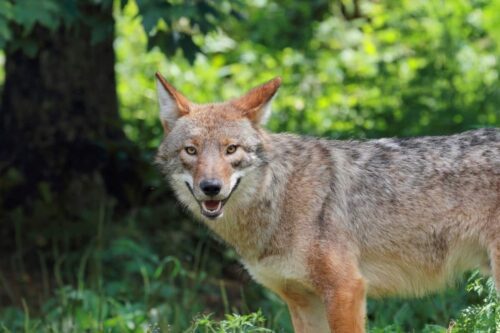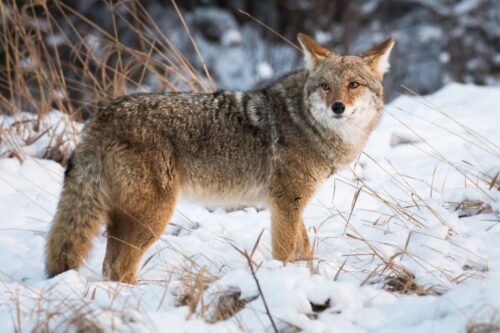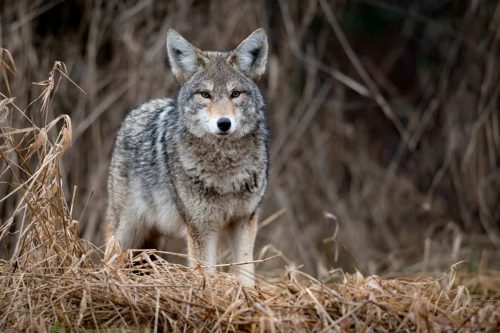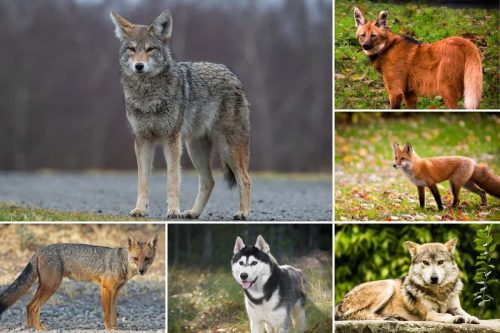Can Coyotes Climb Trees? Exploring their Vertical Abilities
Coyotes are very agile and quick creatures that are very well-known for their extraordinary speed despite having good weight. Coyotes can also climb trees but in this activity, they are not as nimble as other animals like monkeys and feline species. These animals have specially designed paws and claws which are extremely helpful in grabbing and wrapping the tree structure. Coyote has non-retractable claws and the feet and legs of the coyote are also not good enough that they can wrap the trees. Coyotes can climb trees but they don’t do it occasionally. They only climb if they are extremely hungry or they are fearful of the predators coming behind them.
When it comes to their climbing ability, they can easily jump up to 8 feet in the air and they can also jump 14 feet off the ground. Most of the time, they climb trees in search of food like possums or raccoon babies on the trees. Coyotes can climb trees but there are certain limitations attached to their climbing abilities. In this article, we are going to discuss in detail whether can coyotes climb trees or not and what limitations are associated with their climbing abilities.
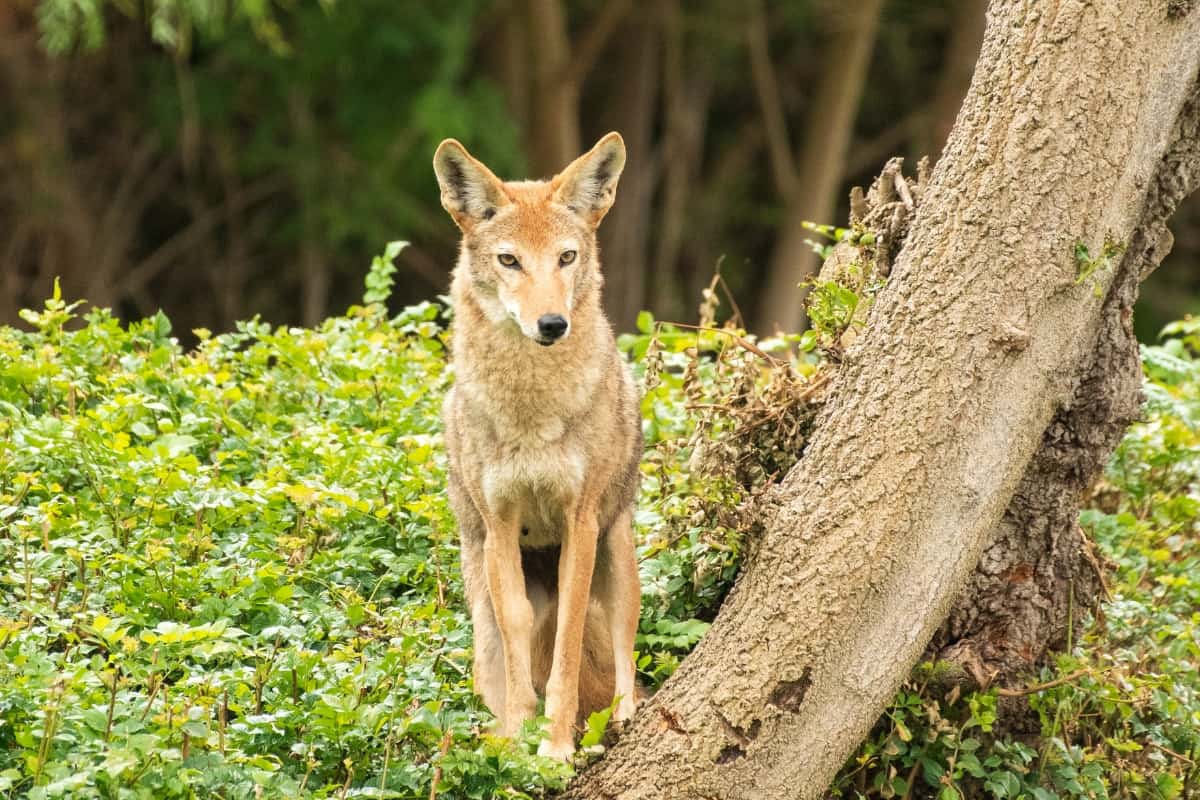
Contents
Can coyotes climb trees?
Coyotes are commonly associated with their running and jumping abilities, which let them navigate diverse terrains and obstacles. They can leap over fences and maneuver through rocky or uneven landscapes with relative ease. However, when it comes to tree climbing, they usually rely on their sharp claws and agility to scale trees to a limited extent, especially when pursuing prey or seeking refuge.
It is worth noting that the tree-climbing capabilities of coyotes may vary depending on factors such as their physical condition, the specific habitat they inhabit, and individual traits. While they are not considered proficient tree climbers compared to certain other animals, they can exhibit some climbing behavior when necessary.
Do you know whether coyotes can swim or not? Find out in this article.
Why do coyotes climb trees?
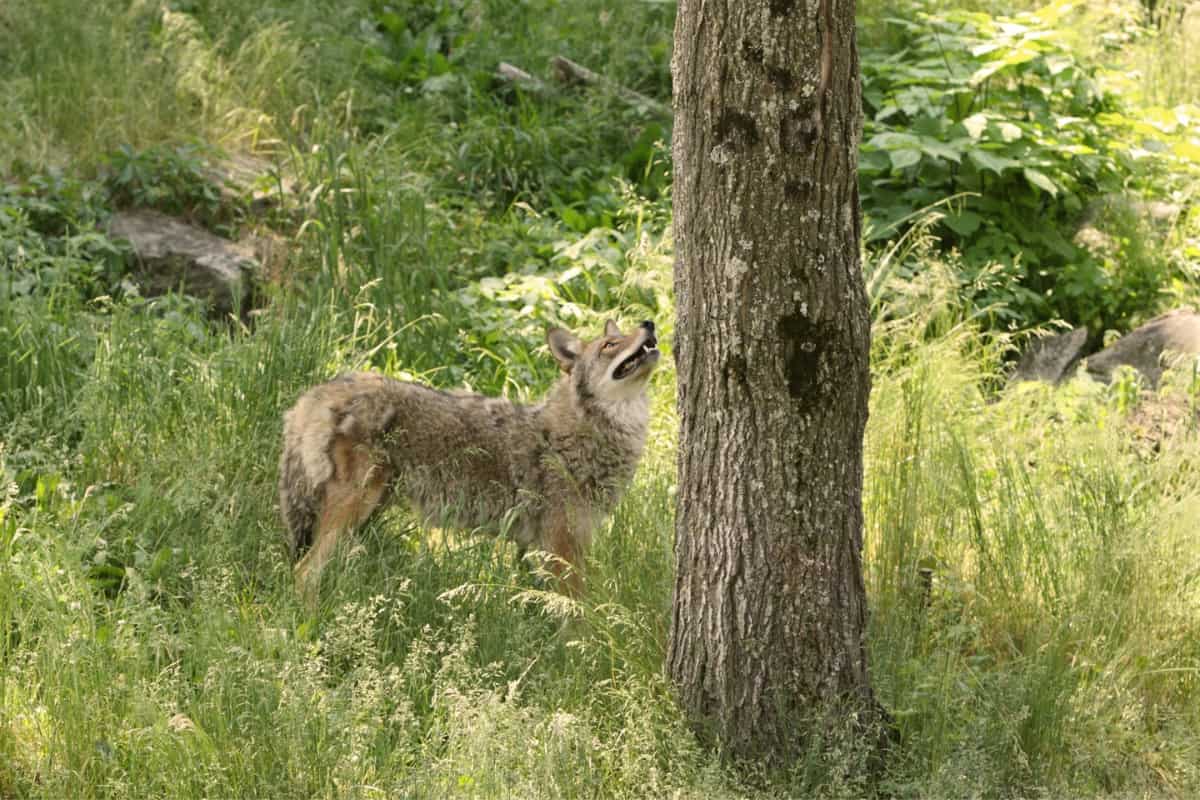
Coyotes are not known for being frequent tree climbers, but there are a few reasons why they may climb trees in certain situations. Being opportunistic predators, they may climb trees to access food sources or prey that have taken refuge in the branches. Climbing trees allows the coyotes to get closer to their potential meal.
Coyotes may climb trees to escape from larger predators. If they feel threatened, they may hide in the branches as a temporary refuge until the danger passes. Trees can also provide coyotes with a better view of their surroundings. They can use elevated positions to scout for prey, monitor their territory, and observe potential dangers coming toward them.
Generally, coyotes may climb trees to find shelter. But this kind of behavior is less common. They may use higher ground or the cover of branches as a temporary resting spot to escape adverse weather conditions.
What makes a coyote a good tree climber?
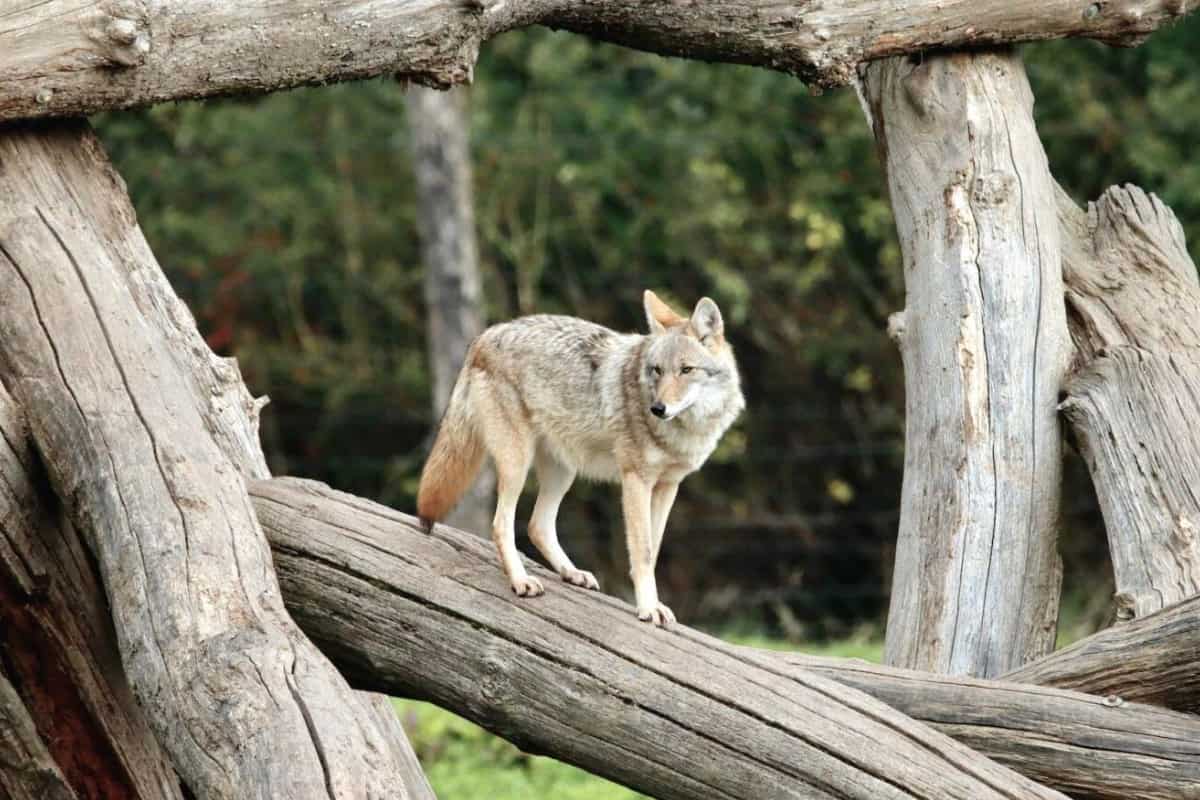
Coyotes are not typically considered excellent tree climbers compared to some other animals like squirrels. However, they do have some features that allow them to climb trees like agility, scrambling, and leaping. Coyotes have some climbing abilities, but these abilities are limited and they primarily rely on their speed, and endurance.
Can coyotes jump fences?
Yes, coyotes are known for jumping fences. Although the primary mode of their movement is running and jumping, they can also use their agility and sharp claws to scale fences, especially those with horizontal supports or chain-link fences. They may use their front paws to reach the fence, propelling themselves upward while using their hind legs to push off. The ability of coyotes to climb fences also depends on specific circumstances like the height and type of fence, the size of the coyote, and the presence of any deterrents or obstacles.
How to keep coyotes out of your yard?

To keep coyotes out of your yard, there are certain measures you need to take. Some of the prominent measures are given below:
Secure your property: The yard must be properly fenced and there must be no gaps that coyotes could squeeze through. Use sturdy fencing materials and always bury the bottom of the fence underground to stop them from digging underneath.
Install coyote rollers: Coyote rollers are rotating devices that can be installed on top of fences to prevent animals from gaining traction. These rollers make it difficult for coyotes to grip the top of the fence.
Remove potential food sources: Coyotes are always attracted to food, so you must eliminate all the attractants like food from your yard. Secure garbage cans with tight-fitting lids, clean up fallen fruits or birdseed and never leave pet food outside.
Secure small pets: Keep small pets indoors, especially during the nighttime when coyotes are most active. If the pets are outside, you must supervise them.
Keep the area well-lit: Install outdoor lighting to deter coyotes, as they like to be in dark areas. Motion-activated lights are highly effective in startling them.
Trim vegetation: Remove dense shrubs and brush from your yard, as these can be good hiding places for coyotes. Keep the area open and well-maintained.
Deploy scare tactics: Coyotes can be deterred by loud noises and sudden movements. You must deploy devices like motion-activated sprinklers, noisemakers, or even shouting to discourage them from coming closer.
Coordinate with your neighbors: Always Communicate with your neighbors about coyote sightings and collectively implement measures to discourage their presence. A united effort can be more effective in keeping coyotes away.
For in-depth details about scaring or keeping coyotes away from your yard, you can visit this article.
Other canines that are good climbers
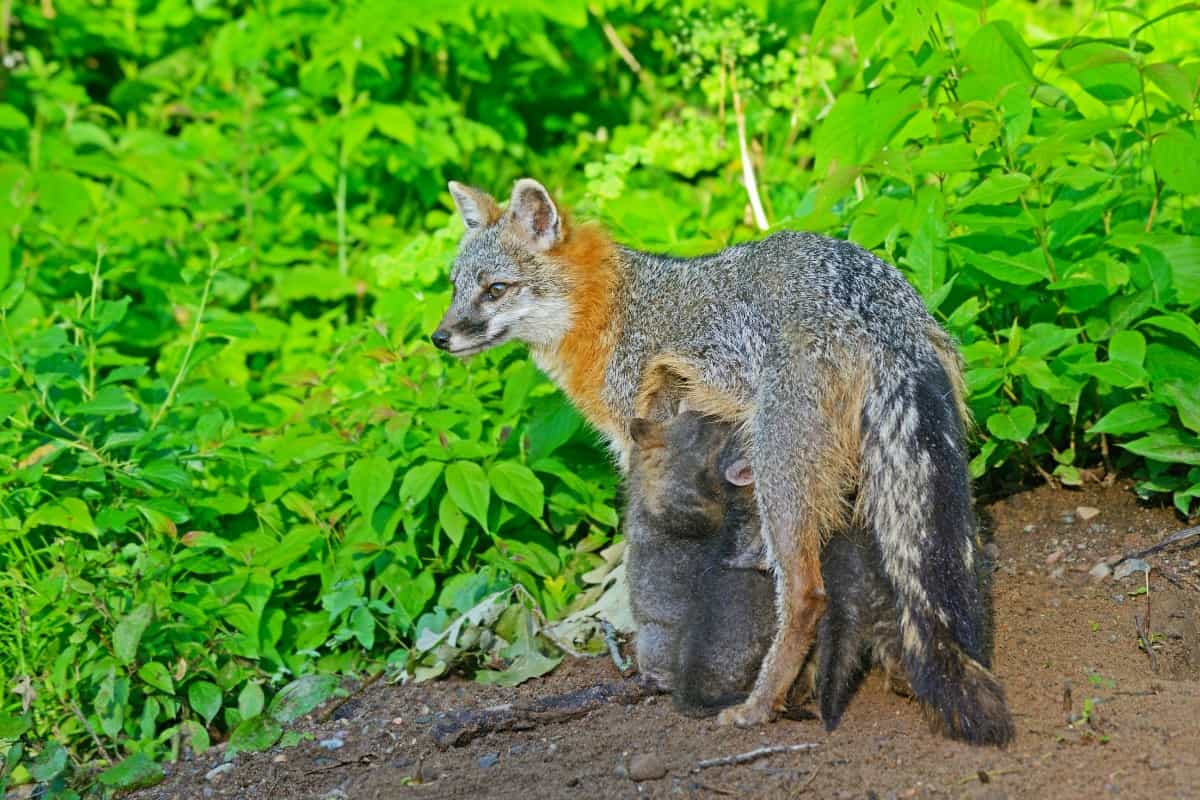
While most canines are not known for their tree-climbing abilities, some of them show some good climbing abilities. For instance, Gray foxes are known for their climbing skills. They have strong claws and flexible forelimbs that enable them to climb trees. Gray foxes often climb trees to escape predators, in search of food, or while seeking shelter.
Raccoon dogs are not true canines but belong to the Canidae family. These small, fox-like animals are native animals of East Asia. They are adept climbers and can ascend trees using their sharp claws. It’s important to note that while these species are known to climb trees, it is not a common behavior observed in most canines.
Frequently asked questions
Conclusion
We have explained in detail that can coyotes climb trees or not. Coyotes are generally considered good climbers, but their climbing abilities are not as developed as those of arboreal species. Coyotes possess strong legs and sharp claws that enable them to navigate rough terrain and climb low branches. However, they are not adept at climbing trees like cats or other arboreal animals.
Coyotes’ agility and athleticism allow them to traverse various landscapes, including forests, mountains, and urban areas. They can utilize their climbing skills to reach food sources or navigate obstacles, but their primary mode of movement is running and jumping. The climbing capabilities of coyotes can vary based on individual factors such as size, age, and environment. In a nutshell, we can say that Coyotes possess some climbing skills, but they are not known for their tree-climbing prowess.

Izzy is an experienced ranch worker who has a passion for exploring nature and getting up close to wildlife. With her connections to various animal organizations, Izzy is well-versed in animal care and rehabilitation.

